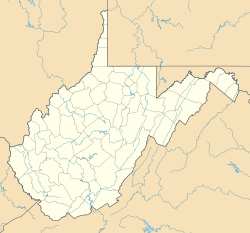Secondcreek, West Virginia facts for kids
Quick facts for kids
Secondcreek, West Virginia
|
|
|---|---|
| Country | United States |
| State | West Virginia |
| County | Monroe |
| Elevation | 1,873 ft (571 m) |
| Time zone | UTC-5 (Eastern (EST)) |
| • Summer (DST) | UTC-4 (EDT) |
| ZIP code |
24974
|
| Area code(s) | 304 & 681 |
| GNIS feature ID | 1555586 |
Secondcreek is a small, quiet place in Monroe County, West Virginia, in the United States. It's called an unincorporated community, which means it's a group of homes and people living together, but it doesn't have its own local government like a city or town. Secondcreek is located northeast of a town called Union. The area used to have its own post office, but it closed in 2010. The community got its name from a nearby stream, also called Second Creek.
Contents
Discovering Secondcreek
Secondcreek is a community in West Virginia that offers a glimpse into nature and history. It's a place where you can enjoy outdoor activities and learn about how people lived long ago.
A Special Stream: Second Creek
Second Creek is a really cool place for fishing, especially for trout! While there used to be many native brook trout, their numbers are now lower. Instead, you'll find more brown trout and rainbow trout that have been introduced.
Fishing Fun
If you love fly fishing, Rodgers Mill is a special spot just for that. The creek gets new fish added every April, making it a great time to visit. Anglers, which is another word for fishermen, can easily get to the creek using County Route 219/3 and County Route 3/7 from US Route 219.
A Look Back in Time
Long ago, Second Creek was a very busy place. More than twenty different mills operated along its banks. These mills were used for many things, like making gunpowder, grinding grain into flour, cutting lumber, and finishing products.
Historic Buildings
Two important historical places in the area are Reed's Mill and the Nickell Homestead and Mill. These buildings are so special that they are listed on the National Register of Historic Places. This means they are recognized for their historical importance and are protected.



